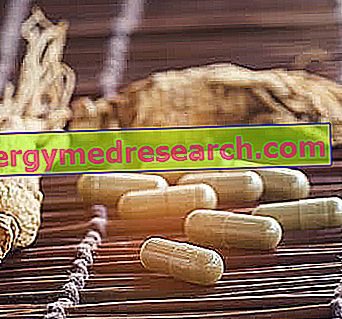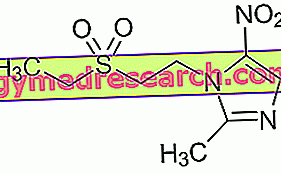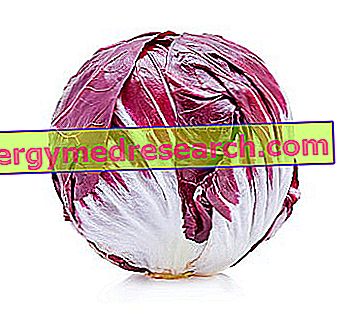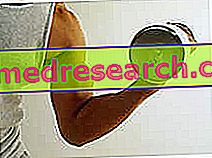Generality
What is ginseng?
The term ginseng designates numerous species belonging to the Araliaceae family. In Chinese medicine, the drug derived from these plants, consisting of the roots, has a millenary tradition behind it, made up of the most varied therapeutic uses.

What is ginseng for?
Considered an almost universal remedy, ginseng was mainly used against aging, gastrointestinal disorders and as an aphrodisiac and revitalizing preparation.
The extraordinary reputation of drug-panacea and the mysterious fascination of its oriental origin have contributed to decree its success in our markets.
Initially driven by their supposed ability to awaken dormant desires, ginseng extracts are now present in numerous food supplements, mostly intended for convalescents, sportsmen and the elderly. It is therefore no coincidence that ginseng is considered the most widely used herbal product in the world.
Types of Ginseng
There are 11 species of ginseng. Classified by place of origin, the most known and used are:
- Asians: Panax ginseng grown in China, P. schinseng or Chinese ginseng, P. pseudo-ginseng growing in Nepal and in eastern Imalaia, P. notoginseng grown in China, P. japonicus, P.vietnamensis
- Americans: Panax quinquefolius equivalent to Asian ginseng for uses, appearance and composition
- Siberian: Eleutherococcus senticosus, different in chemical constitution but similar in therapeutic properties.
Among all, the most used and studied species is Panax ginseng.
The term ginseng is so popular that it is improperly exploited, from a commercial point of view, to identify completely different species, such as ginseng from the Andes (Maca) or female ginseng (Dong Quai).
Background
The control of the ginseng fields in China and Korea became the object of contention already in the 16th century.
In 1900 the commercial demand exceeded the offer, or the availability of wild ginseng; it was thus that Korea began commercial cultivation of ginseng, which continues today.
In 2010, about 80, 000 tons of ginseng for international trade were produced by China, South Korea, Canada and the United States.
Properties of Ginseng
Chemical composition of ginseng
The virtues of ginseng are attributable to different active elements, contained in its roots.
In addition to a good level of vitamins, essential oil and polysaccharides (panaxans), it should be noted the presence of ginsenosides or panaxosides (steroidal glycosides and triterpene saponins) and gintonine (a fraction of a glycoprotein), considered the active ingredients of the drug.
Note : Siberian ginseng has a woody consistency, not fleshy, and does not contain ginsenosides but eleutherosides.
Ginseng applications
Aphrodisiac properties
After the initial enthusiasm for his acclaimed aphrodisiac virtues, which are still awaiting scientific confirmation, numerous studies have followed in order to investigate their real healing properties.
Healing properties
From research on ginseng, performed mainly in the East (later we will understand better why), elements have emerged that have proposed its use in the treatment of various diseases and physical problems, such as:
- Type II diabetes mellitus
- Hypotension
- Gastritis
- Insomnia
- Fatigue
- Excess stress.
Other properties
Ginseng extracts have also been given effects:
- Antioxidants
- antipyretics
- cholesterol-lowering
- Probiotics
- radioprotective
- anticarcinogenic
- Antinfiammatorii
- Memory improvement
- Reduction of menopausal symptoms.
Disputes
Insufficient studies and economic interests
Many of these effects, demonstrated only on animals, are still awaiting scientific confirmation; furthermore, the quality and neutrality of the studies conducted in East Asian countries has been questioned.
Another problem derives from the enormous economic interests that revolve around this plant and that push for the recognition of its alleged therapeutic properties. The ginseng trade involves 35 nations (China is the largest consumer), with a turnover of more than 2 billion dollars, half of which comes from South Korea (2013 values).
All this explains why different opinions exist in this regard, ranging from excess of enthusiasm to exaggerated skepticism.
Ginseng: increases cortisol?
Ginseng is traditionally considered a tonic or adaptogenic drug (technical synonym), as it is useful for strengthening the immune system and improving physical and mental capacity. Several animal studies have shown that ginseng influences the hypothalamic-pituitary axis, increasing the release of ACTH, a hormone that induces the adrenal release of cortisol or "stress hormone". Cortisol improves the response to psychophysical stress, promoting the degradation of glycogen, of muscle proteins and stimulating the functionality of the central nervous system.
Nitric oxide and aphrodisiac effect
The alleged aphrodisiac effect of ginseng seems linked to its ability to increase the release of nitric oxide from the endothelial cells of the cavernous bodies of the penis; the resulting vasodilation would allow for a more vigorous erection.
Among the various species, Chinese medicine combines the greater aphrodisiac properties with red ginseng, whose coloring is simply due to the treatment of the root with steam (120-130 ° C for about 2-3 hours) and to the subsequent drying.
Is it really useful against diabetes?
Numerous studies highlight the benefits of ginseng in diabetic mice, but there is not an equally large number of research on men that confirms its hypoglycemic properties (ginsenosides seem to favor pancreatic insulin synthesis and increase the production of glucose transporters in the liver; i Panaxans (polysaccharides) seem instead to decrease the synthesis of glucose in the liver and increase its use in various body tissues).
Recommended dose
The recommended dose of ginseng is 200 mg a day of dry extract or 0.5 to 2 g a day of dry root.
Side effects
Ginseng consumption is considered quite safe and the incidence of adverse effects appears to be lower when used in the short term.
Major concerns concern systematic consumption, which can cause nervous and digestive side effects.
These are adverse reactions that occur in the population, as happens for many herbal remedies - phytotherapy, in a disorderly and extremely subjective manner.
Moreover, the side effects related to the ingestion of ginseng correlate mainly with the intake of megadoses (15 g of dry extract).
- The most common LIEVE symptom picture shows one or more of the following factors: dry mouth and lips, euphoria, restlessness, irritability, tremor, palpitations, blurred vision, headache, insomnia, increased body temperature, increased blood pressure, edema, decreased appetite, dizziness, itching, eczema, diarrhea early in the morning, bleeding and fatigue.
- The SERIOUS symptomatology can include: nausea, vomiting, irritability, restlessness, urinary and intestinal incontinence, fever, increased blood pressure, increased breathing, decreased sensitivity and reaction to light, reduced heart rate, cyanosis of the face, redness, seizures, convulsions and delirium.
Pharmacological Interactions
Attention should be paid to the use of ginseng together with: phenelzine, warfarin, gleevec (chemotherapeutic, accompanying hepatotoxicity), lamictal (anticonvulsant), oral hypoglycemic agents, injectable insulin, digoxin, hormones and caffeine or other stimulants.
Contraindications
Ginseng should be avoided by:
- Hypertensive
- Who tends to bleeding
- In considerable doses, pregnant and nursing.
A form of ginseng allergic hypersensitivity exists, although it is not very widespread.
Property summary
In conclusion, we report a table taken from a rewiev by David Kiefer et al. (Am Fam Physician. 2003 Oct 15; 68 (8): 1539-42), chosen for the simplicity and caution with which it summarizes the main properties of ginseng.
| Effectiveness | Improvement of psychological functionality: effective, although there are some research of opposite sign |
| Increased athletic performance: ineffective | |
| Strengthening of immune defenses: effective | |
| Hypoglycemic: modest action, numerous scientific evidences on laboratory animals, limited in humans | |
| Side effects | Symptoms such as nausea, diarrhea, euphoria, insomnia, headache, hypertension, hypotension, breast pain, vaginal bleeding and pressure fluctuations may appear due to the ingestion of particularly high doses (15 g, ie 30-75 times higher than the recommended doses) ). Cases of allergy have also been recorded. |
| Interactions | Caution in the simultaneous use of ginseng and phenelzine [Fenelzina (a psychopharmaceutical)], Warfarin [Coumadin (an anticoagulant)], oral hypoglycemic agents, insulin, digoxin, hormones and caffeine. It is contraindicated to those suffering from hypertension or bleeding. |
| dosages | Standardized extract: on average it is 200 mg a day |
| Dried ginseng root (for infusions or chewable): 0.5 to 2 g per day | |
| Cost | From 15 to 20 dollars for a month of supplementation at dosages of 200 mg of ginseng a day |
Watch the video
X Watch the video on youtube



